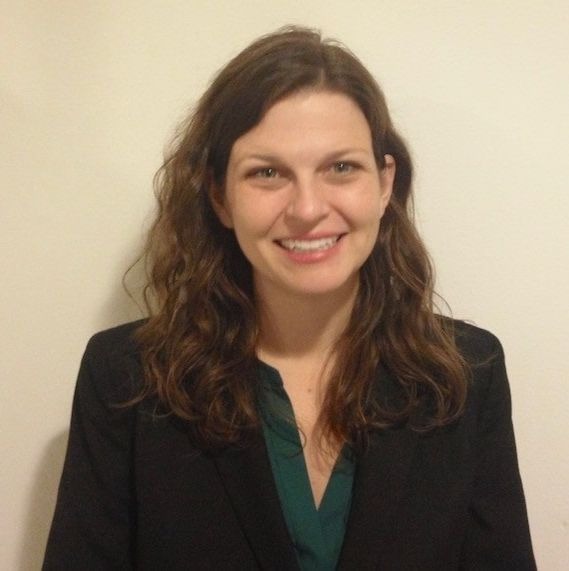By The WomenLift Health Team
We spoke with Callie Simon, Adolescent Sexual and Reproductive Health Team Lead and Advisor at Save the Children, and one of the members of our 2020 Leadership Journey US-based cohort. Read our Q&A to learn about her Leadership Journey project, who inspires her, and how she works to center women and girls in COVID-19 recovery.
What is your Leadership Journey Project and why did you choose it?
My project focuses on advancing the implementation of adolescent- and gender-responsive health systems: ensuring that adolescents, particularly young women, can get quality, comprehensive and respectful services, including sexual and reproductive health services, anywhere they choose to go. With this approach, the aim is to see fewer unintended pregnancies, improved health outcomes, and greater opportunity for adolescents, particularly girls, to be educated and take on leadership roles.
Adolescents and youth around the world face many barriers to getting the health services they need — from distance to health facilities, cost of services, and the inability to leave the house unaccompanied and decide when to seek services. When an adolescent gets to a facility, services are structured for older women, focusing on maternal and newborn health, and providers can be disrespectful towards young people.
The primary solution to this challenge has been youth-friendly services, which is an evidence-based approach whereby providers, facilities and communities are modified to be friendly, respectful and accessible to adolescents. However, they are typically implemented in a separate room in a health facility, supported by donor funding. Unfortunately, these rooms are often used for something else once the donor leaves, so they are not sustainable or scalable. As a result, millions of adolescents still lack access to comprehensive services.
As a response to that, I’m aiming to advance implementation of the responsive systems approach, wherein whole health is strengthened to meet adolescent needs, rather than only reaching adolescents in separate rooms. Adolescents deserve more than a corner in a facility; they deserve to receive comprehensive and respectful care anywhere they seek services.
What has surprised you about the WomenLift Health Leadership Journey experience?
I’ve been most pleasantly surprised by the comradery, spirit of collaboration and support amongst the WomenLift Health Leadership Journey cohort. I expected to grow as a leader and a person and to receive tips and tricks to advance my leadership journey — that expectation has definitely been met. But I didn’t expect that there would be such an incredible group of women who are so inspiring and supportive. The group is comprised of women from a wide range of global health backgrounds doing really different things and yet we come together and feel this sense of collaboration and action.
How has COVID-19 shifted the focus of your work within your organization?
One of our team’s tasks is to provide technical assistance to Save the Children country offices who are seeking to advance and protect the health of adolescents and youth. While adolescents and youth aren’t the most vulnerable to COVID, they are among the most vulnerable to schools being closed, a lack of social and peer connections, increased violence in the household, and diminished or lack of access to sexual and reproductive health services.
Many health facilities rapidly pivoted to only providing what they deemed to be essential services, and for many health facilities, that was not contraception, HIV testing or care, or other sexual and reproductive health services. As a result, we have been working with our country teams to pivot to support governments and community partners to maintain those essential health services and provide adolescent and youth with essential sexual and reproductive health information during COVID. Adolescents have the right to learn about their bodies, how puberty works, their sexuality, and how to prevent pregnancy, and that need doesn’t end just because of COVID.
How can we ensure that women are at the center of not only COVID recovery plans but also long-term strategies for the improvement of health?
We need women, especially women of color, at the table. For women to be the center of recovery plans, they need to be the ones designing the plans. They are the ones who best know their own realities and needs. Importantly, we also need young women at the table. They have a value add and a unique viewpoint and we have to be creating space for those young leaders, even as we’re celebrating more experienced women leaders.
Who inspires you?
Right now, I’m inspired by young women activists and advocates around the world. Part of why I love my job is that I get to work with young women activists who are making the case for why sexual and reproductive health should be a priority, sometimes in contexts that are extremely dangerous and difficult — and yet they’re speaking out.
I was particularly inspired by Amanda Gorman’s poem at the U.S. Presidential Inauguration. We often write off young women leaders as inexperienced — what a disservice that is to the world. Look at what happens when you don’t write them off and you give them a platform. For every one Amanda Gorman, there are hundreds of young women with capacity and idea — if given the platform, they will change our world.


